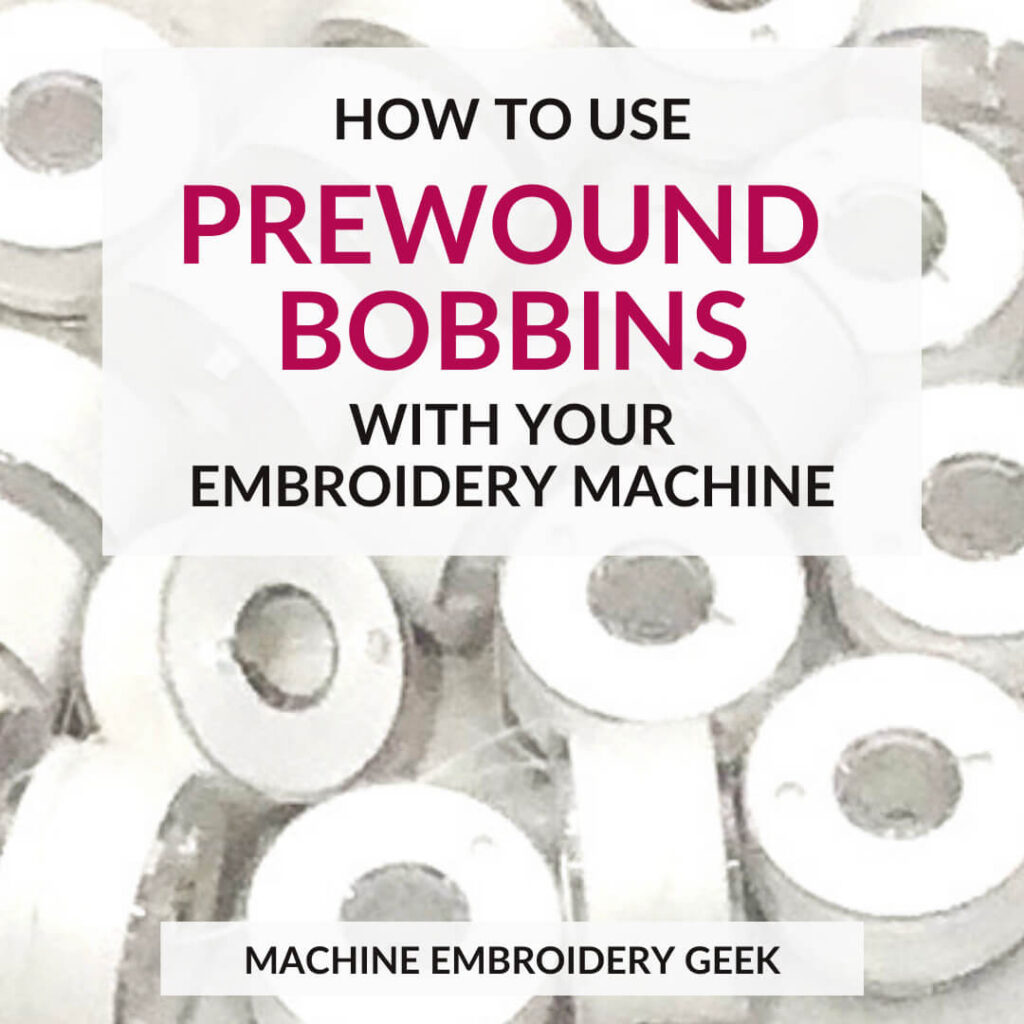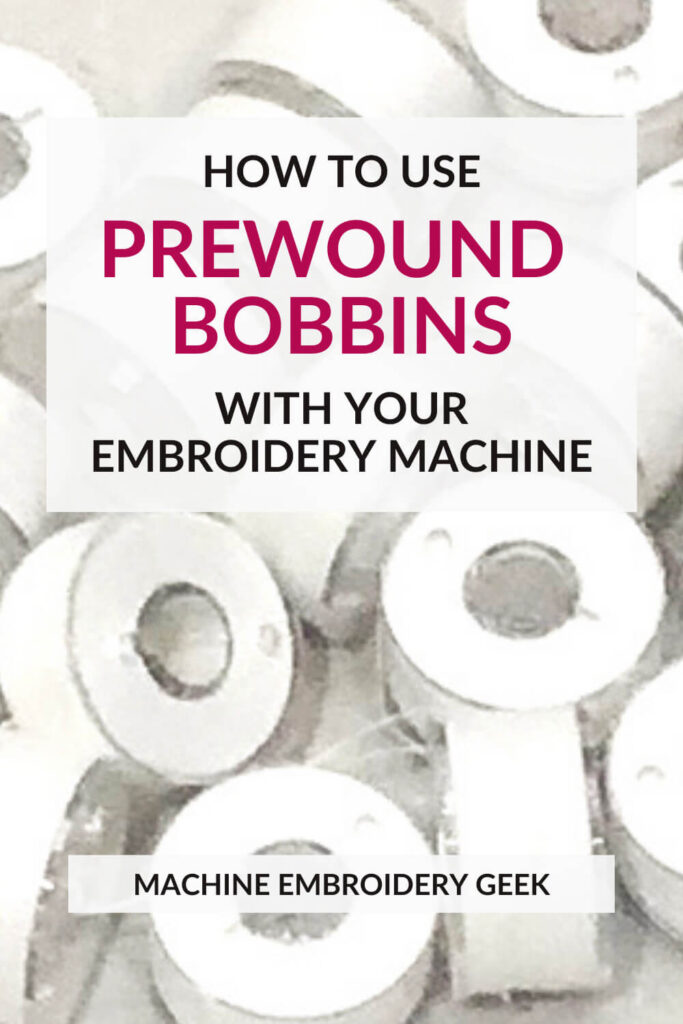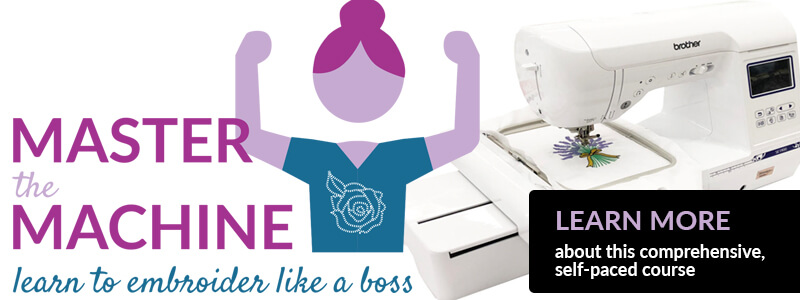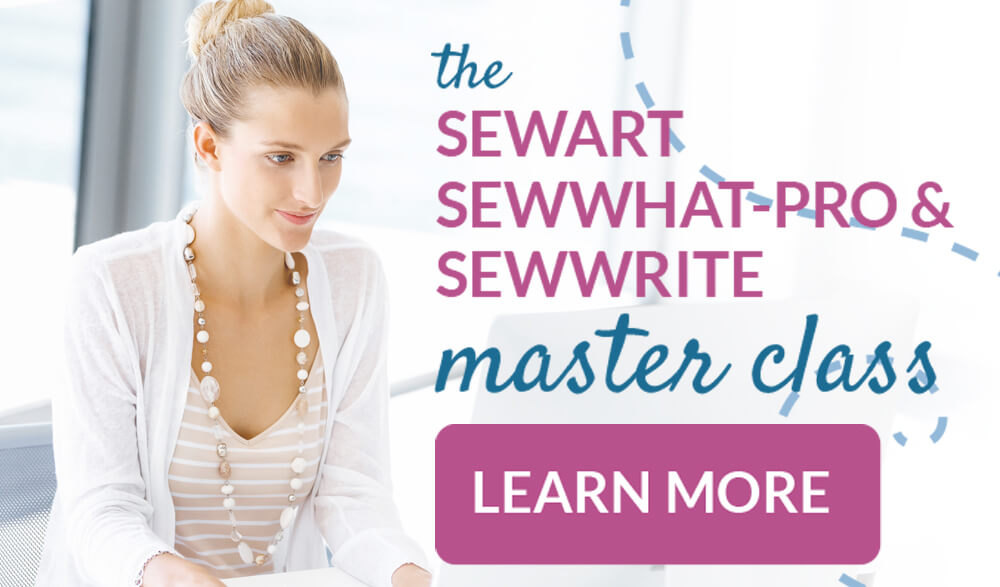How to use prewound bobbins with your embroidery machine
This site contains affiliate links to products. We may receive a commission for purchases made through these links.

If you’re into machine embroidery, then you know that stitching out a design can mean using a lot of embroidery thread as well as bobbin thread. And when you are doing a lot of embroidery, you will need to change your bobbin frequently. Having to stop and wind a bobbin each time you run out can be annoying which is why prewound bobbins can be an attractive alternative.
With prewound bobbins, winding is a thing of the past! As soon as you run out of bobbin thread, you just pop a new one in!
But, how well do they work, and are they worth the extra money?
In this article, I’ll discuss the pros and cons of pre-wound bobbins and help you decide if they’re right for you.
Products mentioned in this post
- Prewound bobbin suppliers:
- Battery powered or electric bobbin winders
What are prewound bobbins?
Prewound bobbins are exactly what they sound like – bobbins that come already wound with bobbin thread. They’re available in a variety of colors and types of thread.
But, if you’re considering using prewound bobbins in your embroidery machine, you want to make sure you are buying ones specifically for machine embroidery and ones that are compatible with your embroidery machine.

Bobbin thread for machine embroidery
In case you are new to machine embroidery, the type of bobbin thread you use for machine embroidery is different from what you would use when you are sewing.
When you are sewing, you typically match your bobbin thread to the top thread. But, with machine embroidery, you want to use a bobbin thread that is made specifically for machine embroidery. This type of bobbin thread is thinner and has less twist than regular sewing machine bobbin thread.

Why? Using the right type of bobbin thread ensures that your embroidery looks great. The thinner weight of the bobbin thread creates an imbalance of thread tension, pulling more top embroidery thread to the back of the project, helping to ensure that your bobbin thread will not appear on the top of your embroidery.
Because you use the same type of bobbin thread for almost every project you make on your embroidery machine, you go through a lot of it. Typically I buy a large spool of machine embroidery bobbin thread and wind them myself.
But recently, I was sent some prewound machine embroidery bobbins and I decided to give them a try.
The verdict? Both worked great. But the convenience of prewound bobbins is hard to beat.
Choosing the right type of prewound bobbins
Not all prewound bobbins are created equal and using the wrong type of bobbin can cause problems with your machine.
Different embroidery machines can work with different types of prewound bobbins. Read the labels as they will often tell you what machines they work with. Or ask people with similar embroidery machines what they use.
Pros and cons of prewound bobbins for machine embroidery
The pros:
Prewound bobbins can save you time – no need to stop and wind your bobbin in the middle of a project! If you are running an embroidery business, time is money, so prewound bobbins can help you get more embroidery done in less time.
Prewound bobbins can help you avoid tangles and thread breakage – since the thread is already wound neatly on the bobbin, there’s less chance of it getting tangled.
Prewound bobbins also may result in more consistent tension because the winding is so exact.
Finally, more thread can be wound on a prewound than what you can do winding the bobbin yourself. This means more embroidering before you have to change a bobbin.
The cons:
Prewound bobbins can be more expensive than buying bobbin thread separately and winding your own bobbins. But, I find the difference in expense is pretty negligible compared to the cost of other machine embroidery supplies.
Another consideration… after you use the prewound bobbin, then you are left with an empty spool. What will you do with all those empty bobbin spools and unnecessary waste?
Frequently asked questions about prewound bobbins for machine embroidery
Are prewound bobbins reusable?
Prewound bobbins are not meant to be reused. They are just not durable enough for repeated windings. Once you’ve used up the thread on a prewound, you should dispose of it (or creatively recycle it) and start with a new one.
With that said, can you reuse the spool? Yes. You can. I’ve done it and it works, but it is only possible with plastic spools and not the paper type. But I would only do it in a pinch because they are a bit flimsy.
Can I use any type of prewound bobbin in my machine?
No no no! You need to make sure you buy the appropriate type for your embroidery machine.
Will prewound bobbins ruin your bobbin casing?
If the prewound bobbin doesn’t fit the bobbin case perfectly, you could damage your bobbin casing. For this reason, many embroidery machine companies do not recommend using them.
However, if it looks like a good fit, and you have good tension and stitch quality, then I wouldn’t worry about it.
Where can you buy prewound bobbins?
You can find prewound bobbins at any of the embroidery suppliers websites such as: DIME, Allstitch, Metroemb and Threadart. You can also find them on Amazon.
What prewound bobbins work with a Brother embroidery machine?
It depends on the type of Brother embroidery machine you own. Check the manual, or check the suppliers product description. They often list all the machines that a bobbin works with.
What is the difference between prewound bobbins on plastic spools vs paper?
The ones with the paper are thought to create less wear and tear on the bobbin casing. The plastic ones are used in the drop in bobbins and of course can not remove the plastic.
Do prewound bobbins go bad?
While they do not go bad, the thread may become brittle with age. So, if you have had your prewound bobbins for a long time and notice that the thread is breaking more easily, it’s probably time to replace them.
Should you use the same brand of thread for your top embroidery thread and your bobbin thread?
No – it really doesn’t matter. I use a lot of different types of embroidery thread and don’t pay attention to the brand I’m using and whether or not it is the same brand as the bobbin thread without any issues at all.
How can you recycle prewound bobbins?
Some brands can actually be sent back to the manufacturer for recycling.
Other people have found creative ways to reuse the empty spools. For example, one woman uses the spools to store embroidery floss for cross stitch projects. Another wraps them with regular thread to make sewing kits for a charity.
If you have a lot of empty spools, you could try contacting your local embroidery or sewing group to see if they would like them for a project.
Are bobbins for embroidery machines interchangeable?
No, bobbins are not interchangeable. Each type of machine uses a specific type of bobbin and they are not compatible with other machines.
For example, Brother embroidery machines use a round bobbin that is slightly smaller in diameter than a traditional sewing machine bobbin. These bobbins are not compatible with sewing machines.

What are the most common types of prewound bobbins?
Thread Type A (also known as Class 15 home machine embroidery bobbins), Type M and Type L are the most prevalent types. Types A and L have same diameter but different thicknesses. Type M are typically used on commercial embroidery machines.
Before purchasing, you should also look at the weight of the thread on the bobbin. Different machines require different bobbin thread weights.
If you are unsure which type of bobbin your machine uses, consult your manual or carefully read the product description of the bobbin thread listing.
What is the difference between a bobbin and a spool?
A spool is what the thread comes on when you buy it. A bobbin is what you put the thread on to use in your machine. Prewound bobbins are just bobbins that already have thread on them.
Why is my bobbin thread showing up within the embroidery?
There are a number of reasons why your bobbin thread might show up on top of your embroidery. The most common reason is that the tension on your machine is not set correctly.
If you are using a prewound bobbin, make sure that it is the correct type for your machine and that it is inserted correctly. If you are winding your own bobbin, make sure that it is not over-filled.
See my previous post that takes a deeper dive into the reasons why your bobbin thread might be showing up on top.
Alternatives to prewound bobbins
I got very sick of having to unthread my machine to wind a new bobbin, so I recently purchased a bobbin winder. And, I use it to wind bobbins for both sewing and embroidery.
An independent bobbin winder offers a couple of distinct advantages. One – it’s a time saving device. You can wind bobbins while you are sewing and/or embroidering. And, two – it lessens the wear and tear on your machines because you are no longer using them to wind bobbins.
You can buy battery powered or electric bobbin winders.

So, are pre wound bobbins better?
Prewound bobbins can be a great time saver – especially if you find yourself frequently changing your bobbin in the middle of a project. However, they can also be more expensive than regular bobbins and you’re left with an empty spool after you use them. If you decide to use them, be sure to buy the correct type for your machine. And, be sure to recycle those empty spools!
Do you use prewound bobbins for machine embroidery? What are your thoughts? Feel free to add them in the comments below!
Happy stitching!
XO
Julie
Want to remember this? Save “How to use prewound bobbins for machine embroidery” on your favorite Pinterest board.



















